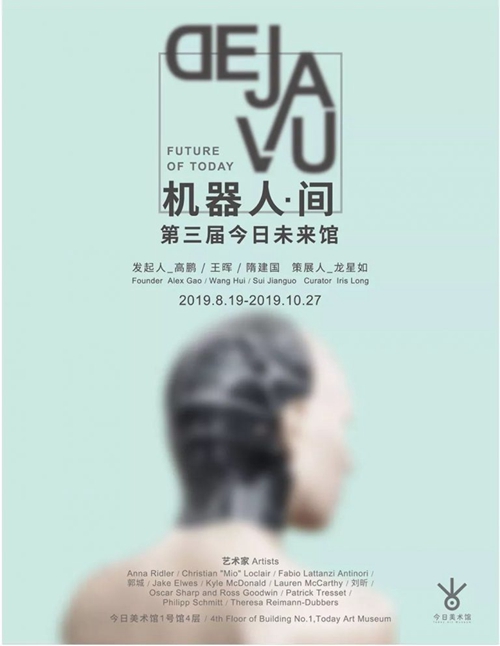
Mark Weiser’s prophecy that “The most profound technologies are those that disappear. They weave themselves into the fabric of everyday life until they are indistinguishable from it”, echoes through the exhibition de ja vu: clattering data centers tower over underpopulated areas, and underwater fibre-optic cabling resurfaces on unpopulated beaches. The exhibition is itself a story about deja vu – a collective one about humans and machines. The humanoid robots that have been “switched on” in recent years (from “Sophia” to Google’s robots) echo an ancient deus ex machina, while the gentle, invisible virtual assistants – the Siris, Cortanas and Alexas who turn off lights for us – are reminiscent of the omnipresent gods and spirits that once lived alongside us. An explanation of the technoscene tends to be slightly slower than the actual technological phenomena occur, which leaves space for symbols and metaphors.
De ja vu is the name of an exhibition, of a world that might emerge; sited on the fourth floor of Today Art Museum, it can be experienced in two directions. The time-space that the exhibition creates is a terminus that shivers like a mirage between the evolving trajectory of technologies and the human race. Read clockwise, it tells a story of algorithms developing from abstract to ever more capable physical embodiments, arriving at a post-anthropocene conclusion with machines as the Earth’s sole residents. Read counter-clockwise, however, the story unfurls in reverse: it starts with a comprehensive machine contemplating its origins, and follows its archaeological process, until the machine meets its reductionist fate fading away into 1s and 0s. And so de ja vu describes a sense of deja vu between humans and machines.
In The Beginning of Infinity, David Deutsch expressed an irrefutable “computability of any process”. A non-anthropocentric view of machines seems to guide us towards a state of worshipping “computability” as the guiding rule of reality – a computational world concealed by technology and ruled by number, digits, models, processes and measurements. Yet this worldview poses a risk: to deposit our understanding of reality in the abstract and “neutral” concept of computability is, also, to voluntarily abandon the biological mind and its sensory experiences – a vain act.
The exhibition can be seen as an epitome of the fate of humans and machines, where the delicate thread between information and physical reality remains, while the coexistence of humans and machines is still playing out with absurdity and richness. If the computing structures are fading away from tangible experience, to a point where humans are no longer consciously aware of the existence of the computing infrastructure and its interfaces, then perhaps artists can allow this awareness to resurface, examining errors and prejudices in this process of “fading away”. Artists are like journalists or novelists, who make imaginary connections conduct research on what is hidden, and return us to an integrated way of understanding the world – a “deja vu” of what we were like, in the very beginning.
About the exhibition
Curator: Iris Long
Opening: 2019.08.19
Duration: 2019.08.19 – 2019.10.24
Location: 4th Floor of Building No.1, Today Art Museum
Artists: Anna Ridler, Christian Mio Loclair, Fabio Lattanzi Antinori, Guo Cheng, Jake Elwes, Kyle McDonald, Lauren McCarthy, Liu Xin, Oscar Sharp and Ross Goodwin, Patrick Tresset, Philipp Schmitt, Theresa Reimann-Dubbers
Courtesy of the artists and Today Art Museum, for further information please visit www.todayartmuseum.com.




























